For an incident ray directed towards centreof curvature of a spherical mirror, the reflected ray:
retraces its path
passes through the focus
passes through the pole
becomes parallel to the principal axis
The correct Answer is:A
To solve the question regarding the behavior of an incident ray directed towards the center of curvature of a spherical mirror, we can follow these steps:
1. Understand the Setup:
- A spherical mirror can be either concave or convex. The center of curvature (C) is the point where the radius of curvature intersects the mirror's surface.
2. Identify the Incident Ray:
- The incident ray is directed towards the center of curvature. This means that the ray is traveling straight towards point C.
3. Reflective Properties of Spherical Mirrors:
- When a ray of light strikes a spherical mirror, it reflects according to the law of reflection, which states that the angle of incidence is equal to the angle of reflection.
4. Behavior of the Ray at Center of Curvature:
- For both concave and convex mirrors, if an incident ray strikes the mirror at the center of curvature, it will reflect back along the same path. This is because the angle of incidence is zero (the ray is directed straight towards the mirror), resulting in the angle of reflection also being zero.
5. Conclusion:
- Therefore, the reflected ray retraces its path back to the source. This means that the correct answer is that the reflected ray retraces its path.
Final Answer:
The reflected ray retraces its path.
- A spherical mirror can be either concave or convex. The center of curvature (C) is the point where the radius of curvature intersects the mirror's surface.
- The incident ray is directed towards the center of curvature. This means that the ray is traveling straight towards point C.
- When a ray of light strikes a spherical mirror, it reflects according to the law of reflection, which states that the angle of incidence is equal to the angle of reflection.
- For both concave and convex mirrors, if an incident ray strikes the mirror at the center of curvature, it will reflect back along the same path. This is because the angle of incidence is zero (the ray is directed straight towards the mirror), resulting in the angle of reflection also being zero.
- Therefore, the reflected ray retraces its path back to the source. This means that the correct answer is that the reflected ray retraces its path.
The reflected ray retraces its path.
Topper's Solved these Questions
- REFLECTION OF LIGHTBOOK - ICSECHAPTER - REFLECTION OF LIGHTEXERCISE - EXERCISE 7(B)
9 Videos
- PROPAGATION OF SOUND WAVES BOOK - ICSECHAPTER - PROPAGATION OF SOUND WAVES EXERCISE - EXERCISE -8(B) (Multiple choice type)
3 Videos
- SOUNDBOOK - ICSECHAPTER - SOUNDEXERCISE - TOPIC 2 Infrasonic and Ultrasonic Waves ( 3 Marks Questions)
3 Videos
Similar Questions
The diagram in Fig. shows an incident ray AO and the normal ON on a plane mirror. Draw the reflected ray. State the law you use to draw the direction of the reflected ray.
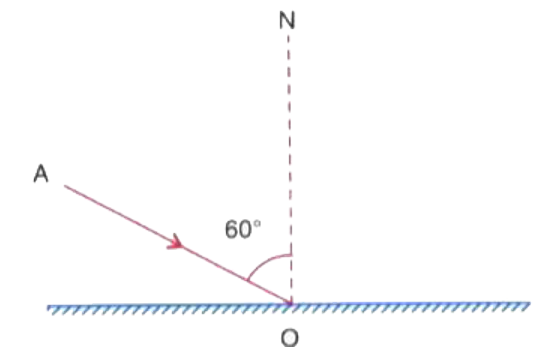
View SolutionPlane wavefronts are incident on a spherical mirror as shown, the reflected wavefronts will be
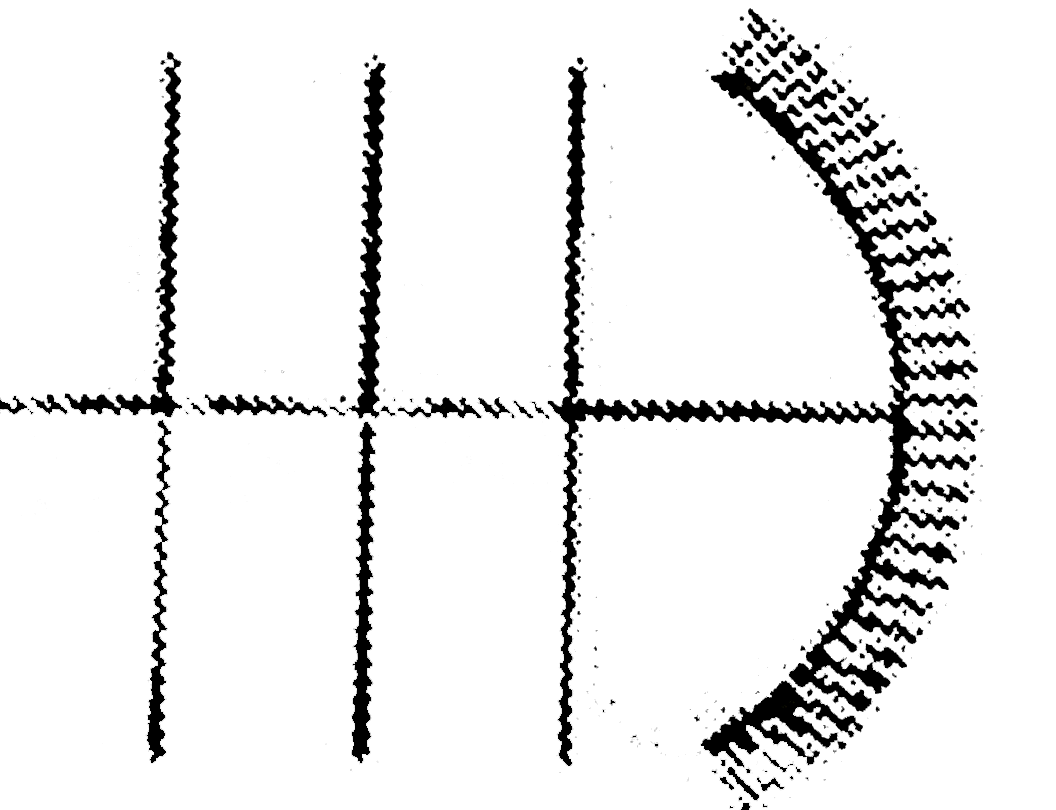
View SolutionState the direction of incident ray which after reflection from a spherical mirror retraces its path. Give a reason to your answer.
View SolutionAny ray of light which initially passes through the principal focus of a spherical mirror, after reflection passes through centre of curvature.
View SolutionA ray of light is incident on a concave mirror . It is parallel to the principal axis and its height from principal axis is equal to the focal length of the mirror. The ratio of the distance of point B to the distance of the focus from the centre of curvature is (AB is the reflected ray)
_E01_055_Q01.png)
View SolutionThe diagram below shows a light ray striking and reflecting from a plane mirror AO is the incident ray and OB the reflected ray. The angle between the incident ray and the reflected ray is 120∘.
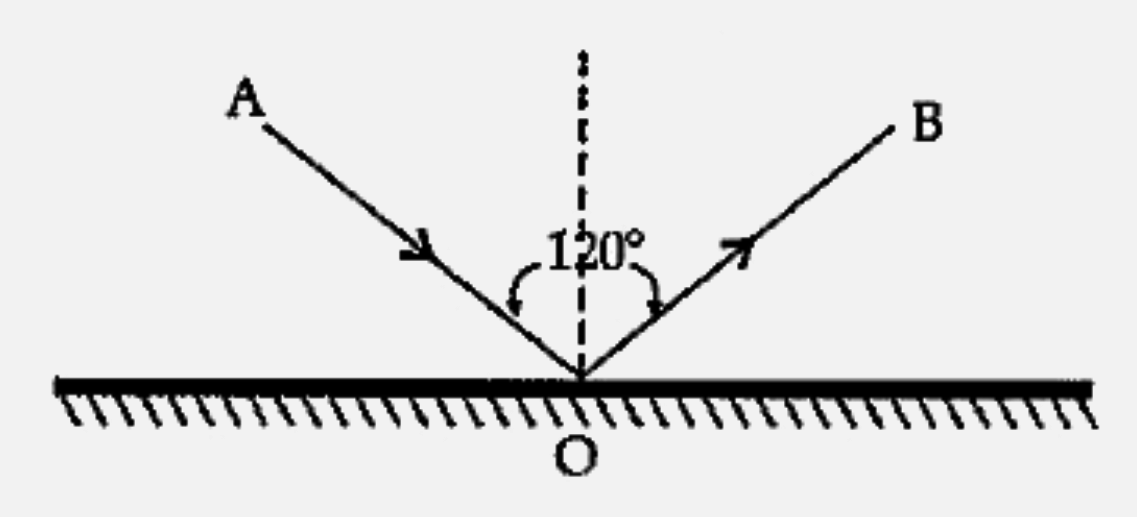
What is the value of the angle of reflection?
View SolutionFig. shows an incident ray AO and the normal ON on a plane mirror. The angle which the incident ray AO makes with mirror is 30∘.
Draw the reflected ray
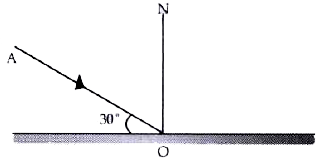
View SolutionFig. shows an incident ray AO and the normal ON on a plane mirror. The angle which the incident ray AO makes with mirror is 30∘.
The angle between the incident and reflected rays.
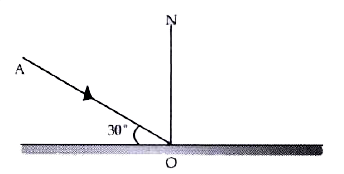
View SolutionFig. shows an incident ray AO and the normal ON on a plane mirror. The angle which the incident ray AO makes with mirror is 30∘.
Find the angle of incidence.
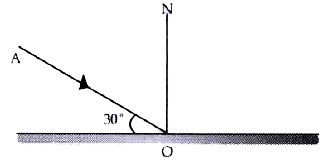
View SolutionThe following diagram (Fig) shows an incident ray AO and the normal ON on a plane mirror. Find the angle of incidence and angle of reflection.
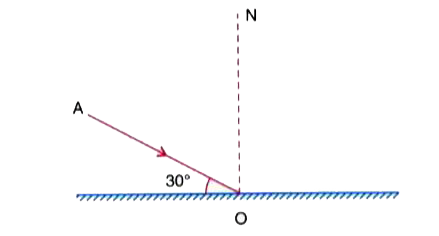
View Solution
